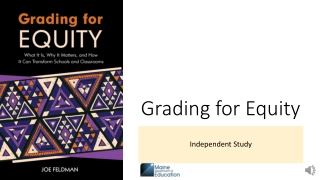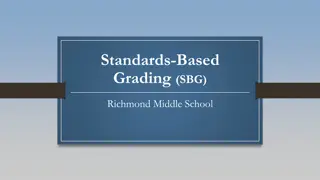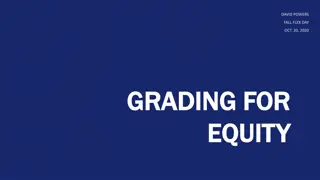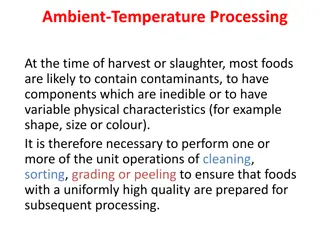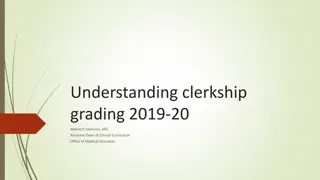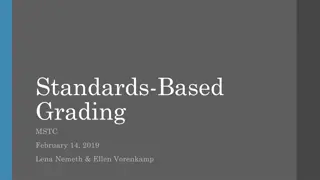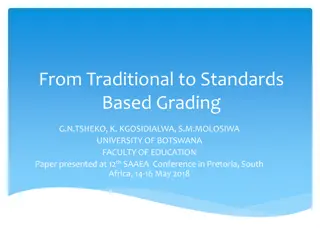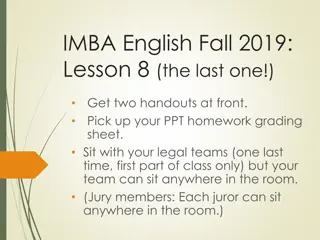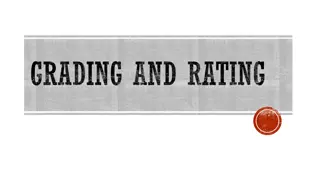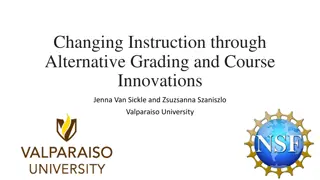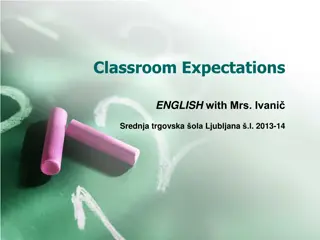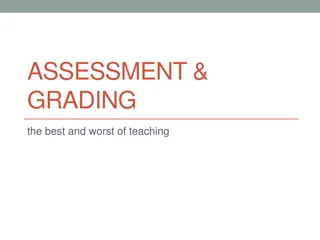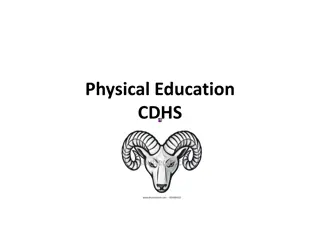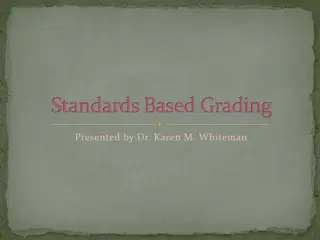Enhancing Assessment Strategies in Education: A Focus on Standards-Based Grading
Explore the principles of standards-based grading in education, emphasizing the importance of consistent, meaningful, and accurate grading to support student learning. Learn how grades should reflect a student's understanding at a specific time and how assessments can communicate performance on individual standards effectively.
Download Presentation

Please find below an Image/Link to download the presentation.
The content on the website is provided AS IS for your information and personal use only. It may not be sold, licensed, or shared on other websites without obtaining consent from the author.If you encounter any issues during the download, it is possible that the publisher has removed the file from their server.
You are allowed to download the files provided on this website for personal or commercial use, subject to the condition that they are used lawfully. All files are the property of their respective owners.
The content on the website is provided AS IS for your information and personal use only. It may not be sold, licensed, or shared on other websites without obtaining consent from the author.
E N D
Presentation Transcript
Standards-based Grading Durham Public Schools
Grades MUST be... consistent, meaningful, accurate, & supportive of learning. Therefore grades MUST be... a result of careful thought. supported by sound evidence. an ACCURATE reflection of a students level of understanding at a particular time.
Consider... Mary is very smart, but puts in little effort in her classes. She excels on tests without really needing to study. However, Mary often talks in class and rarely does her homework, which has caused her to receive an overall grade of a C. David, on the other hand, always completes his homework and puts forth his best effort in class. However, he seems to struggle on tests because there are parts of the material that he has not yet mastered. He also has an overall grade of a C.
Academic vs. Non-academic 4 - Exceeds All Standards 3 - Meets All Standards 2 - Meets Some Standards 1 - Does Not Meet Standards C - Consistently Demonstrates S - Sometimes Demonstrates R - Rarely Demonstrates
Grade Composition A percentage is a measure for the number of items answered correctly, which is often a reflection of performance on multiple (related and unrelated) standards. ineffective in communicating a student s strengths and weaknesses.
Grade Composition Standards-based grading communicates a student s level of understanding for a particular standard. 4 - Exceeds the standard. 3 - Meets the standard. 2 - Meets some of the standard. 1 - Does not meet the standard.
Percents SBG How can assessments that indicate a student s overall performance as a percentage be utilized to articulate a student s level of understanding for each standard?
Consider...Use place value understanding for whole number computation (cluster) 5/5 3.NBT.1 Use place value understanding to round whole numbers to the nearest 10 or 100. 0/53.NBT.2 Fluently add and subtract within 1000 using strategies and algorithms based on place value, properties of operations, and/or the relationship between addition and subtraction. Traditional: 50% SBG: ?
Consider...3.NBT.2 Fluently add and subtract within 1000 using strategies and algorithms based on place value, properties of operations, and/or the relationship between addition and subtraction.
Consider...3.NBT.2 Fluently add and subtract within 1000 using strategies and algorithms based on place value, properties of operations, and/or the relationship between addition and subtraction.
Which is the most effective way to communicate the students level of understanding currently (end of unit)? Traditional: 50% (gradebook) OR SBG: (gradebook) 3.NBT.1 - 3 3.NBT.2 - 2
Consider...next steps targeted intervention targeted extension or enrichment evidence to support level of understanding (end of quarter) 3.NBT.1 - 3 3.NBT.2 - 3
Which is the most effective way to communicate the students level of understanding of the cluster (Use place value understanding for whole number computation) at the end of the quarter? Traditional: 50 + 100 / 2 = 75% (report card) OR SBG: ? (report card) 4 - Exceeds all standards. 3 - Meets all standards. 2 - Meets some standards. 1 - Does not meet standards.
Which is the most effective way to communicate the students level of understanding of the cluster (Use place value understanding for whole number computation)? Traditional: 50 + 100 / 2 = 75% (report card) OR SBG: 3 (report card) 4 - Exceeds all standards. 3 - Meets all standards. 2 - Meets some standards. 1 - Does not meet standards.
Consider...Reading Literature - Key Ideas and Details (cluster) 5/5 RL.3.1 Ask and answer questions to demonstrate understanding of a text, referring explicitly to the text as the basis for the answers. 0/5RL.3.2 Recount stories, including fables, folktales, and myths for diverse cultures; determine the central message, lesson, or moral and explain how it is conveyed through key details in the text. 3/5 RL.3.3 Describe characters in a story and explain how their actions contribute to the sequence of events.
Which is the most effective way to communicate the students level of understanding currently (during the unit)? Traditional: 53% (gradebook) OR SBG: (gradebook) RL.3.1 - 3 RL.3.2 - 1 RL.3.3 - 2
Consider...next steps targeted intervention targeted extension or enrichment performance tasks (end of unit) RL.3.1 - 3 RL.3.2 - 2 RL.3.3 - 3
Consider...next steps targeted intervention targeted extension or enrichment evidence to support level of understanding (end of quarter) RL.3.1 - 3 RL.3.2 - 2 RL.3.3 - 3
Which is the most effective way to communicate the students level of understanding of the cluster (key ideas and details)at the end of the quarter ? Traditional: % correct on averaged assessments OR SBG: 2 2 based on current supporting evidence on averaged assessments (report card) based on current supporting evidence (report card) 4 - Exceeds all standards. 3 - Meets all standards. 2 - Meets some standards. 1 - Does not meet standards.
DPS Elementary Report Card Uses clusters of standards to evaluate student achievement levels Focuses on communication and student growth Reports academic and non-academic indicators, separately
How should a students level of understanding of the standards (for any assignment) be recorded in gradebook?
4, 3, 2, 1 4, 3, 2, 1
How do we communicate the level of understanding for students who are exceeding the standards?
Grade level assessments assess mastery of standards. supplemental documentation required for students receiving instruction that exceeds grade level standards
Should the mCLASS BOY TRC be used to determine the student s text reading level recorded on the report card?
No, as the report card No, as the report card should reflect the student s should reflect the student s current text reading level. current text reading level.
Can a student receive a level 3 or 4 for any cluster if he/she is unable to independently read the grade level text used to assess the currently taught standards?
No. A child must independently read an on-grade level text and be able to independently apply the appropriate grade level standard to demonstrate mastery.


